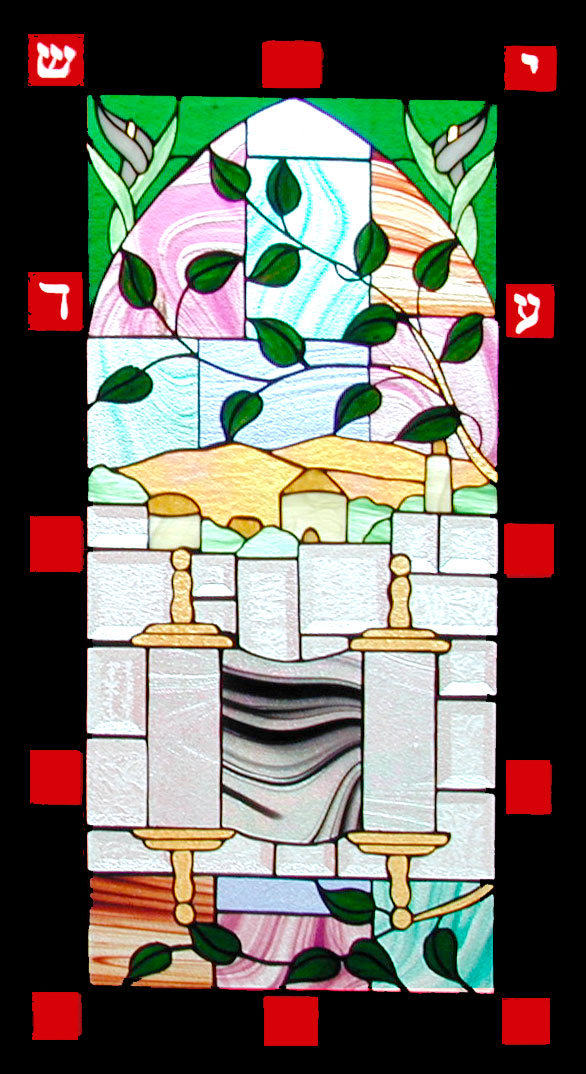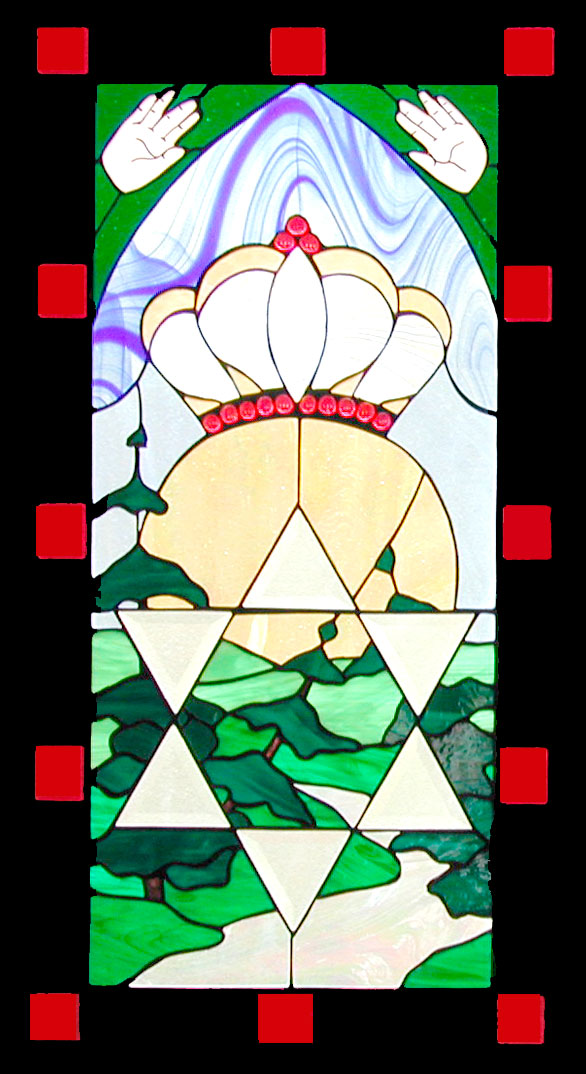About usBeth Ezekiel stands as a testament to a rich history of tradition and faith that spans more than 5,000 years. It is also a monument to those who fled persecution and carried that faith and tradition with them to Owen Sound. Our synagogue is their legacy.
|
A Century and a half of JudaismThere has been a Jewish presence in Owen Sound for as long as there has been a town here. At the turn of the 20th century Jewish merchants and tradespeople, fleeing the pogroms of Eastern Europe, found their way to this bustling commercial centre.
In 1893 the Owen Sound Times carried mention of a “Hebrew birth” in Owen Sound. By 1904 a Hebrew teacher was hired to instruct the Jewish community’s children. At about this time regular services were being held, first in homes, then in various rented accommodations. |
In 1947, the Calvary Church, built fifty years earlier, was purchased and named in honour of Isaac Ezekiel Cadesky, a driving force in the establishment of the present synagogue. A full-time rabbi soon took up residence with his family on the top floor of the new synagogue to lead services, teach the children, and slaughter chickens kosher-style for the growing Jewish community.
Today, though the top floor is vacant, the local Jewish community continues to keep the synagogue alive, and Beth Ezekiel endures as the centre of Jewish life for the region -- and a source of great pride for its congregation. |
|
The Sabbath
Fishman Family 
Sabbath is the theme of this window. It was chosen to honour all the women in the Fishman family who, through their love and strength of character, provided and nurtured the traditions of their Jewish homes. It is a celebration of the vision and determination of Bernie’s Grandmother Jeanette, who left her friends and family in Romania with three young children in tow. She had a dream for a better life. Her daughter Rose (Bernie’s mother) went on to fulfill that dream. The window is also testament to the courage of Bernie’s father Sam, who ventured back to his native Poland in 1938 to convince his family to leave Europe while they still had the chance. Tragically, most fell victim to the Holocaust. The window depicts the lighting of the Sabbath candles, a moving and deeply personal ritual reserved for women of the household. Among the complementary symbols depicted are the rose, for Bernie’s mother Rose. Bernie’s parents names, שמס (Sam) and גרי (Rose), are inscribed in the border.
|
The Garden
Elie Family 
A celebration of family, this window focuses on the living and on lives lived. Jeff’s late father, David, is represented by the Star of David – a symbol of his commitment to Jewish life and traditions. The large rose is for Jeff’s mother, Rose, who provided inspiration and a source of strength that carried the family through triumphs, as well as challenges. The three butterflies represent Jeff and his late sister Shelley, and his late brother Jack. The two smaller roses are for Jeff’s wife Stella, and his sister-in-law Marilyn. Above all are six jewels, one for each of the children of the next generation: Aaron, Danielle, Jessica, Daryl, Lauren, and David. Inscribed in the border is לחיים (To Life), a phrase that sums up the intent of the window, which succeeds because of the meaning behind the design, and also because of the vibrant garden scene with the rose vine and butterflies.
|
"Nuchum"
The Gorbet Family |

Born in Owen Sound and taken into the family business out of high school, Norman Gorbet was an active participant in community life and a pillar of the synagogue. The windows are a testament to his love for his family and his devotion to his faith. The Ner Tamid (eternal light) is a symbol of the joy and light Nuchum found in the synagogue over the many years he prayed here. The commandments represent the example he set for his children as he patterned his life after the teachings of the Torah. The open hearts, inverted in the top corners of each window, are a cherished reminder for all who know Nuchum, of a life filled with love and compassion, and of a person who always answered the call of the Shofar, never hesitating to don his Tallit and pray. These two symbols of faith and devotion were a large part of Nuchum’s life, and as such, are prominent features of the windows dedicated to his memory.
|
|
Jerusalem
The Green Family 
This beautiful window depicts several Jewish motifs set against the backdrop of Jerusalem, the heart and home of the Jewish religion. Front and centre is the Torah, the law that guides our faith. Its position and prominence in the window is reminiscent of the great importance it has in the daily lives of all observant Jews. Behind the Torah stands the Western Wall, a cornerstone of the Jewish faith and a symbol of its endurance. The Jewish imagery is intertwined with symbolism of personal significance to Av and Emmy. The tree of life represents the Green family name, and the white flowers at the top is for Emmy’s family name, Weiss. The Hebrew letters in the window border are the first initials of close family members. ע
is for Av’s Father, Jacob and for Emmy’s father, Yosef Johanan. י is for Emmy’s Mother Ita. The ד and ש are for Av’s mother Dora and his aunt Sarah.
|
Life
The Fromstein Family 
This window is rich in symbolism, addressing Hy’s Jewish faith through the central element of the Star of David. Peering through the star, we are offered a glimpse of local scenery, a representation of his great love of nature. Both the crown and the priestly hands of blessing in the top corners are references to Hy’s status as a Kohen, a descendant of Aaron, who enjoyed both special privileges and responsibilities within the synagogue. In Hy’s case, one of those priestly hands should perhaps wear a golf glove, to signify his passion for the game. It wasn’t uncommon for Hy to hit plastic golf balls in his clothing store, Kornblum’s, much to the delight and bemusement of his loyal customers.
|
Learning
The Landy Family 
Joseph Meyer Freiden immigrated with his young family to Winnipeg after the turn of the 20th century leaving behind the pogroms of Russia. Limited in his formal education by the lack of opportunity when he was young, he pursued throughout his adult life a love of literature and learning, and was a long-standing member of the Winnipeg community’s Yiddish Theatre. The tree in this window represents the tree of knowledge. In it are three large fruits representing the three daughters of Joseph and Reva Freiden. The five smaller fruits represent Edith and David Landy’s five children. The curtain framing the tree and the book below the tree represent Joseph’s participation in the theatre and his love of learning. The thimbles, needles and thread in the upper corners are a remembrance of his craft and the means by which he enabled his family to root itself and then flourish in the new world.
|
Peace
The Levine Family 
This window is a joyful tribute to the beauty of nature, to continuous growth and to the wonders of life’s discoveries. It is dedicated to the Levine family by Gary Levine, eldest son of Mervyn “Mickey” and Peggy Levine. Adorning the top of the window is the Hebrew letter ח, the first in the Hebrew word “Chaim”, which is Gary’s Hebrew name. Mickey Levine settled his family in Manitoba and the prairie wheat fields in the background became their family home. The window invites the eye to look beyond and as in biblical times, each son set out to find his own path. The three sons continued their travels until the youngest, William, settled in New York City, Thomas in Dallas and Gary here in Owen Sound. The dove is William’s Hebrew name Jonah, which brings hope for peaceful times for all; the peace Gary has found here in Beth Ezekiel Synagogue.
|
|
Welcome
The Shuster Family |

This double window at the synagogue entranceway sends a warm message of welcome to those approaching the synagogue, and offers a blessing of peace as they leave. The windows were dedicated by Richard Shuster in honour of his grandfather, Hyman. In the left-hand panel, the large שלוס (Shalom), along with the iridescent doves, convey the wish of peace. The lyre represents Hyman’s love and support for music and the arts. On the right panel is a Mezuzah, a protective amulet. On it is the word שדי (Almighty), which is inscribed to face visitors as they enter the synagogue from the outside. The banner reads ברוך הבא (Blessed is the one who enters), a benediction that offers a blessing to all who pass by the window. This is the synagogue’s only window where the central imagery extends beyond the top arch. By doing so, it conveys the idea that our message of welcome, peace, and blessing is unconditional and cannot be contained.
|










